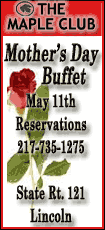|
 Protesters said Wednesday's "pray-in," which led to the arrest of 216 people, was a preview of potential future demonstrations designed to paralyze the city until federal authorities investigate the shooting. Protesters said Wednesday's "pray-in," which led to the arrest of 216 people, was a preview of potential future demonstrations designed to paralyze the city until federal authorities investigate the shooting.
"We're going to keep coming until we get federal indictments. It's wrong," said Frank Rodriguez, a military veteran who attended one of six rallies across the city.
U.S. attorney spokesman Robert Nardoza said the case was under review, but he declined further comment about a possible federal case.
Sharpton and relatives of Sean Bell, the groom killed in 2006 in a 50-bullet barrage, planned to meet privately with Gov. David Paterson on Thursday to talk about the case.

The demonstrators on Wednesday prayed, sang and chanted slogans including "no justice, no peace!" as they converged on six locations, including heavily used bridges and tunnels that carry traffic to and from Manhattan.
Sharpton, two survivors of the shooting and the slain man's fiancee lined up and peacefully put their hands behind their backs as police arrested them on disorderly conduct charges. They were released about four hours later, said Sharpton spokeswoman Rachel Noerdlinger.
The protests were carefully orchestrated: Organizers circulated sign-up sheets for those willing to be arrested and issued instructions on how to behave when arrested. They also were advised not to volunteer if they had warrants out for their arrests or other pending legal issues.
After marching to the New Jersey-bound Holland Tunnel behind a "Stop the Brutality" banner, protesters blocked two entrances as some sang the civil rights anthem "We Shall Overcome." Demonstrators who moved to the sidewalk applauded each time one of their fellow protesters was arrested.
Drivers waited patiently. "I disagree with doing anything illegal, but, hey, this is what makes America great," said Aaron Hanson, a passenger in a car waiting to get into the tunnel. "If this is what people really need to do to make a statement, it's what they should do."
A few miles uptown, some protesters were arrested after blocking traffic into midtown Manhattan on the Queensboro Bridge, while about 200 people rallied near the entrance to the Triborough Bridge in Harlem.
[to top of second column] |
 Sharpton, shooting survivors Joseph Guzman and Trent Benefield, and Bell's fiancee, Nicole Paultre Bell, linked arms as they blocked a street at the Brooklyn Bridge's base.
They were followed by at least 200 demonstrators who kneeled down in prayer in the road and counted from one to 50 in a stark reference to the 50 shots. Some carried signs proclaiming, "We are all Sean Bell."
A heavy police presence initially stood by during the demonstrations, allowing the protesters to march unimpeded to the bridges and tunnels. Mayor Michael Bloomberg had pledged to "make sure that everybody's rights are protected and that the law is obeyed."
The racially polarizing case has raised questions about police use of deadly force in minority communities. Bell was black, as are two of his friends who were wounded in the shooting; the officers were black, Hispanic and white.
The three officers were acquitted of state charges last month. They testified that they feared for their lives after Bell and his friends got into a testy exchange with another patron outside a Queens strip club and appeared to be going to retrieve a gun; Bell's friends testified the detectives fired wildly and without warning at Bell's car. No gun was found with Bell or his friends.

Police Commissioner Raymond Kelly said Wednesday that the department was continuing to examine the possibility of disciplinary action against the detectives.
[Associated
Press; By TOM HAYS and DAVID B. CARUSO]
Associated Press writers Bonny Ghosh and Ted Shaffrey contributed to this report.
Copyright 2008 The Associated
Press. All rights reserved. This material may not be published,
broadcast, rewritten or redistributed. |